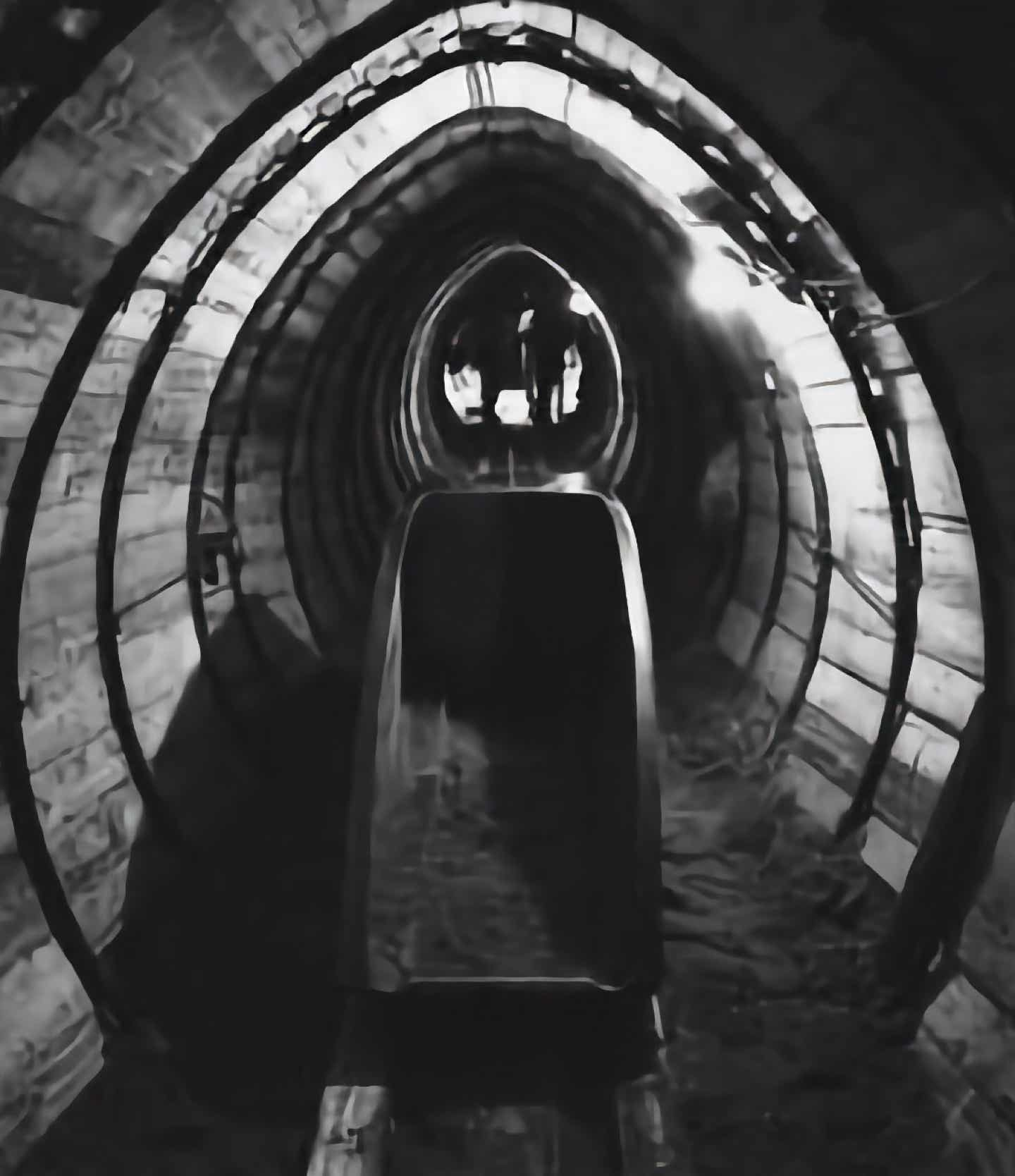Railcar lorry
Process analysis and realisation for a sewer rehabilitation using the tunnel method. The "Düsseldorf model" for the Karl Hamelmann company
Development, design and manufacture of a self-supporting and self-propelled trolley made of special aluminium with an
own, innovative drive concept as well as all units and a docking station
The railcar trolley
The railcar trolley consists of a chassis with drive and specially developed, equalising load roller sets as well as the
removable, self-supporting lorry container in exoskeleton design with an extremely low loading edge.
The vehicle moves several tonnes of soil on simple wooden planks instead of steel rails and travels independently between the excavation site and the descent point.
between the excavation site and the drop shaft.
One of the reasons why no conventional pit technology was used was the very small clearance dimension of the
tunnelling with a standard height of only 1.5m.
Until then, sewer renovation in tunnelling in narrow old town areas and in the city centre, where the street above could not be torn up, was manual work.
the street above cannot be torn up, was manual labour until then. Pickaxes, wheelbarrows and shovels were used exclusively.
The railcar trolley I developed in combination with the new tunnelling method developed for it resulted in a considerable reduction in working time per metre of tunnelling of up to 70%. It also made it possible for the first time to double the usual maximum distance of 50 metres from one descending shaft to the next to 100 metres.
which resulted in further time and cost savings.
A total of 16 of these systems were in operation for more than a decade.

